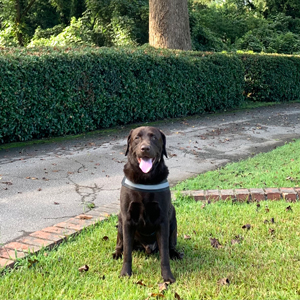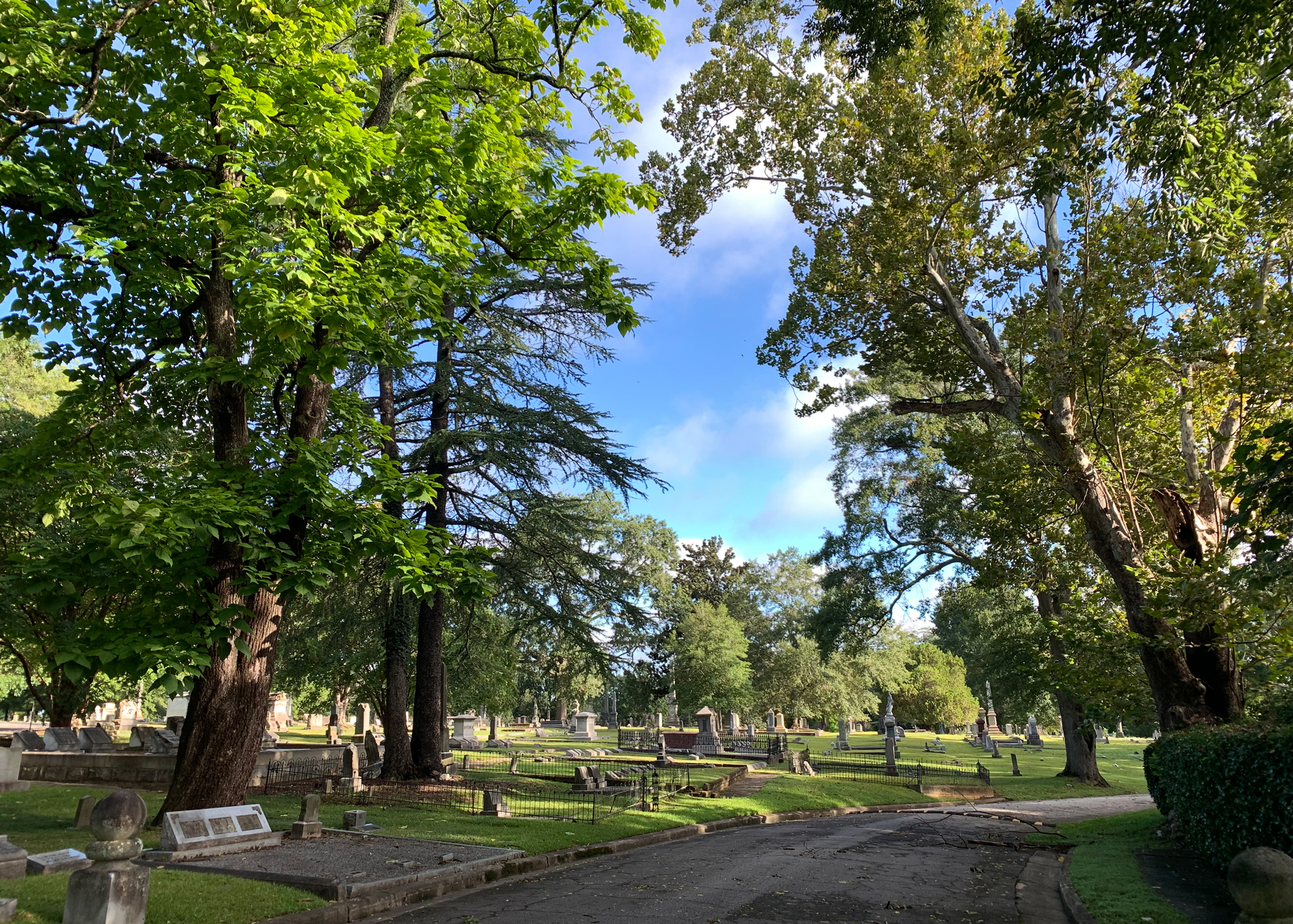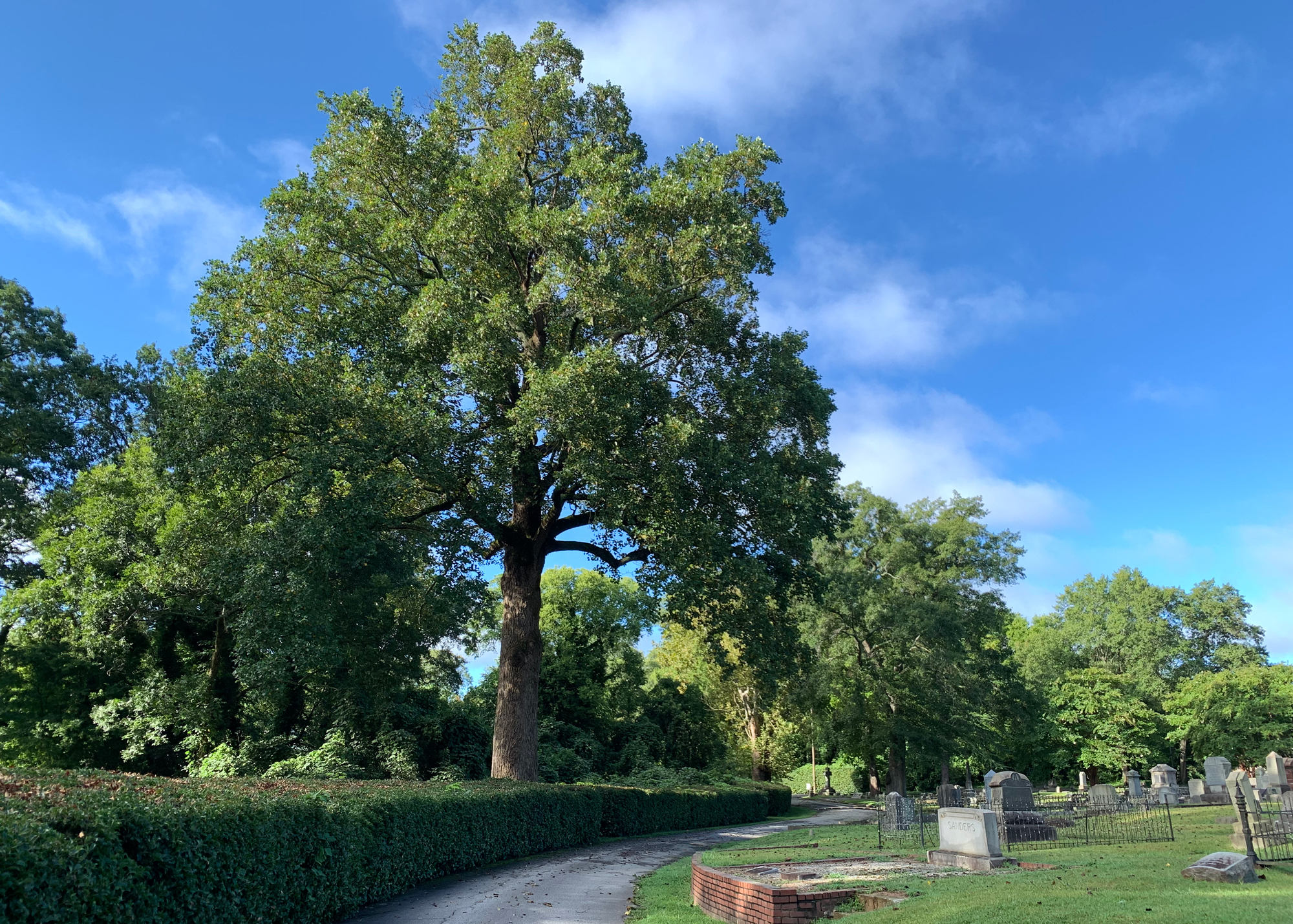We're hiring: Land Stewardship Specialist
This full-time position plays an integral role in our Stewardship and Land Management team by conducting annual monitoring visits to properties protected by conservation easements, interfacing with landowners, compiling reports, and more.
Where have all the grand old trees gone?
September 21st, 2021
By Richard Carr

On the backside, the cemetery is a park-like open space with winding paths and grassy fields full of family headstones. Yet, with the exception of an old water oak and a few young maples, the trees are virtually absent, which means on those typical summer runs, it can get downright hot.
As we make our way towards the front, however, the scenery changes dramatically. The headstones increase in size and grandeur as their dates move farther back in time. And the trees are older, too, and much more abundant. Majestic old southern red oaks (quercus falcata) with their dark gray trunks and waxy green leaves. Branchy northern caltalpas (catalpa speciosa) with their huge heart-shaped leaves and beautiful white blooms. Antique-looking cedar of Lebanon (cedrus libani), which as a child I always thought were mountain trees that must have gotten lost. Here, under their large crowns and thick canopies, Cooper and I always find relief from the summer heat.

Nestled into a hedge of holly at the front entrance, however, are two of the oldest trees in the cemetery. One is a sycamore (platanus occidentalis) with a bifurcated trunk extending from a base as large as a mid-sized SUV. The other, a tuilptree (liriodendron tulipifera), more commonly called poplar, which has a trunk circumference that measures 18 feet at chest height! I know, because I recently took a 20-foot piece of rope and scratched my way through the holly to measure it out. Then, using a calculation that estimates a tree’s age by multiplying its radius with a species growth factor, I discovered the tree is right at 200 years old. At some point in the 1820s, that tree began its life. Then, the US was only 24 states, John Quincy Adams was President, and Spartanburg had yet to be incorporated. My assumption is those two trees just happened to be in the right spots when the cemetery was originally planned.
On a recent trip to the Black River Cypress Preserve near Andrews, SC, UF’s Glenn Hilliard Director of Land Conservation Scott Park, Executive Director Andrea Cooper, and I had the pleasure of paddling into a cypress swamp to see a bald cypress (taxodium distichum) that is verified to be at least 850 years old! Needless to say, there were no such things as States and Presidents when that tree was just a sapling. It can be hard for us to grasp the scope of life for a living thing of that age — that tree’s lifetime extends so far beyond our own, it’s difficult for us to relate our own experience to its.
But there is a catch. As rare and unique as these trees may seem to us, they are actually just average. The maximum lifespan of a tuliptree is 450 years with an average lifespan of 250. For the bald cypress, they can live up to 1,800 years with an average lifespan around 600. The unfortunate reason these “average” trees seem so spectacular now has to do with human activity. It has been estimated that only 1/2 of 1% of our old growth forests remain. Old growth is defined roughly as trees in a forest stand reaching at least ½ of their maximum lifespan.
There is a balance here, of course. Trees also provide. They have always provided for our housing, our furniture, our paper, our winter fires. Modern, well-managed timber stands are a marvel to behold — efficient and abundantly productive. And the cutting of loblolly pine plantations actually takes harvest pressure off of our remaining natural stands. But if you are like me, you would love to see the return of some older forests in the Upstate. Stands of grand old trees that are not just isolated to remote and rarely visited river bottoms or inaccessible drainages on steep hillsides, but ones that actually thrive right out our backdoor. As you can see, that would require decades, even centuries, of protection.
This spring, I attended a webinar that featured a land trust in Virginia called the 500-Year Forest Foundation. They are using no-cut conservation easements to protect mature forests, which they define as 100+ acre stands of native timber that contain a significant number of trees 70 years or older. Their easements offer these forests the protection they need to live into their maximum age, thus giving the forest ecosystem time to reach its full potential of natural succession and biodiversity.
Dr. Robert Zahner, former professor of forest ecology at Clemson University, once wrote,
“Old-growth forests have rightly been characterized as ‘the key’ to biodiversity. The invaluable roles they play include making unique contributions to the gene pool; harboring natural species; demonstrating natural processes; and serving as cores for future wilderness areas and as nodes for biodiversity linked corridors.”
If you are interested in learning more about the characteristics that make up a mature forest and how to identify them, I encourage you to visit the 500 Year Forest Foundation website at 500yearforest.org and click on the heading “Old Growth.” There, you will learn more about how to recognize a mature stand of timber on your own property through characteristics such as standing snags, pit and mound topography, uneven age canopy structure, and tell-tale signs of plant and animal diversity. I also encourage you to take the time to learn how to estimate the age of different tree species by measuring their circumference at chest height (just Google it and you can find ample resources). This is a phenomenal activity that allows you and your family to get out and get to know the age of the timber stands on your property, and to cultivate an understanding and relationship with the natural ecosystems that exist right out your back door.
In the meantime, Cooper and I will continue our runs through Oakwood, admiring the stature of the grand old sentinels that guard the front gate, but most of all, enjoying the cool shade they offer us during the dog days of our summer runs.


